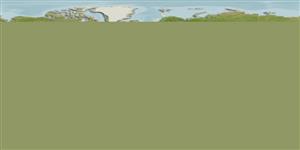Classification / Names
Noms communs | Synonymes | Catalog of Fishes(Genre, Espèce) | ITIS | CoL | WoRMS | Cloffa
>
Scombriformes (Mackerels) >
Chiasmodontidae (Snaketooth fishes)
Etymology: Pseudoscopelus: Greek, pseudes = false + Greek, skopelos = a lantern fish (Ref. 45335). Lütken did not recognize the presence of photophores on the body, confusing them with pores, but referred to a genus of lanternfish (Scopelus now Myctophum) when he named the genus (Ref. 85782); cordilluminatus: Name from Latin ‘cordis’ meaning heart and ‘luminosus’ for full of light, referring to the heart-shaped ‘saf’..
Issue
This species is synonym ofPseudoscopelus scriptus Lütken, 1892 in Eschmeyer (CofF ver. Jan. 2012: Ref. 89336) following (Prokofiev, 2011). Waiting for the publication.
Environment: milieu / climate zone / depth range / distribution range
Écologie
marin bathypélagique; profondeur 537 - 1164 m (Ref. 85782). Deep-water
Eastern South and Central Atlantic, from Middle Atlantic to off Angola; from 20º W to 12º W, 0º to 9º S. Indo-West Pacific, from off Oman to Indonesia; from 57º E to 125º E, 10º N to 5º S.
Taille / Poids / Âge
Maturity: Lm ? range ? - ? cm
Max length : 9.7 cm SL mâle / non sexé; (Ref. 85782)
Description synthétique
Clés d'identification | Morphologie | Morphométrie
Vertèbres: 35 - 36. This species of the Pseudoscopelus scriptus species group is distinguished by the unique dentition pattern of the premaxilla: mesial series in rows of 2-3 teeth, with first and second teeth much smaller than innermost tooth (vs. single row in P. pierbartus and P. obtusifrons; and teeth gradually increasing in size in P. cephalus, P. sagamianus, and P. scriptus). It is further distinguished from P. scriptus with anal-fin photophores (or saf) extending anteriorly beyond and around anus (vs. saf not extending anteriorly to anus); from P. cephalus by vertebral count (total vertebrae 35-36, precaudal 18-19 vs. 31, 14 in P. cephalus ); from P. sagamianus by melanophores inside mouth restricted to tooth insertion region (vs. internal area of mouth and gill arches completely black) (Ref. 85782).
A meso- to bathypelagic, from 537 to 1164 m (mean 954 m) (Ref. 85782).
Life cycle and mating behavior
Maturities | Reproduction | Spawnings | Egg(s) | Fecundities | Larves
Melo, M.R.S., 2010. A revision of the genus Pseudoscopelus Lütken (Chiasmodontidae: Acanthomorphata) with descriptions of three new species. Zootaxa 2710:1-78. (Ref. 85782)
Statut dans la liste rouge de l'IUCN (Ref. 130435)
Menace pour l'homme
Harmless
Utilisations par l'homme
Outils
Articles particuliers
Télécharger en XML
Sources Internet
Estimates based on models
Preferred temperature (Ref.
123201): 1.6 - 4.1, mean 2.1 °C (based on 23 cells).
Phylogenetic diversity index (Ref.
82804): PD
50 = 0.5000 [Uniqueness, from 0.5 = low to 2.0 = high].
Bayesian length-weight: a=0.00389 (0.00180 - 0.00842), b=3.12 (2.94 - 3.30), in cm total length, based on all LWR estimates for this body shape (Ref.
93245).
Niveau trophique (Ref.
69278): 3.5 ±0.2 se; based on size and trophs of closest relatives
Fishing Vulnerability (Ref.
59153): Low vulnerability (10 of 100).
